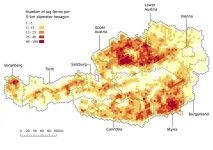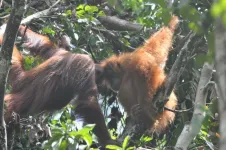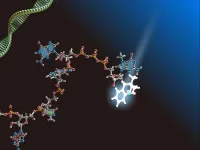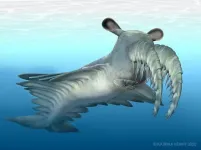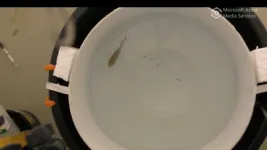(Press-News.org)
Imagine a world where computers can unravel the mysteries of quantum mechanics, enabling us to study the behavior of complex materials or simulate the intricate dynamics of molecules with unprecedented accuracy.
Thanks to a pioneering study led by Professor Zoe Holmes and her team at EPFL, we are now closer to that becoming a reality. Working with researchers at Caltech, the Free University of Berlin, and the Los Alamos National Laboratory, they have found a new way to teach a quantum computer how to understand and predict the behavior of quantum systems, even with a few simple examples.
Quantum neural networks (QNNs)
The researchers worked on “quantum neural networks” (QNNs), a type of machine-learning model designed to learn and process information using principles inspired by quantum mechanics in order to mimic the behavior of quantum systems.
Just like the neural networks used in artificial intelligence, QNNs are made of interconnected nodes, or "neurons," that perform calculations. The difference is that, in QNNs, the neurons operate on the principles of quantum mechanics, allowing them to handle and manipulate quantum information.
“Normally, when we teach a computer something, we need a lot of examples,” says Holmes. “But in this study, we show that with just a few simple examples called ‘product states’ the computer can learn how a quantum system behaves even when dealing with entangled states, which are more complicated and challenging to understand.”
Product states
The ‘product states’ that the scientists used refer to a concept in quantum mechanics that describes the specific type of state for a quantum system. For example, if a quantum system is composed of two electrons, then its product state is formed when each individual electron’s state is considered independently and then combined.
Product states are often used as a starting point in quantum computations and measurements because they provide a simpler and more manageable framework for studying and understanding the behavior of quantum systems before moving on to more complex and entangled states where the particles are correlated and cannot be described independently.
Better quantum computers ahead
The researchers demonstrated that by training QNNs using only a few of these simple examples, computers can effectively grasp the complex dynamics of entangled quantum systems.
Holmes explains: “This means that might be able to learn about and understand quantum systems using smaller, simpler computers, like the near-term intermediary scale [NISQ] computers we're likely to have in the coming years, instead of needing large and complex ones, which may be decades away.”
The work also opens up new possibilities for using quantum computers to solve important problems like studying complex new materials or simulating the behavior of molecules.
Finally, the method improves the performance of quantum computers by enabling the creation of shorter and more error-resistant programs. By learning how quantum systems behave, we can streamline the programming of quantum computers, leading to improved efficiency and reliability. “We can make quantum computers even better by making their programs shorter and less prone to errors,” says Holmes.
Reference
Matthias C. Caro, Hsin-Yuan Huang, Nicholas Ezzell, Joe Gibbs, Andrew T. Sornborger, Lukasz Cincio, Patrick J. Coles, Zoë Holmes. Out-of-distribution generalization for learning quantum dynamics. Nature Communications 05 July 2023. DOI: 10.1038/s41467-023-39381-w
END
CHAMPAIGN, Ill. — Engineers at the University of Illinois Urbana-Champaign have developed a new test that can predict the durability of cement in seconds to minutes – rather than the hours it takes using current methods. The test measures the behavior of water droplets on cement surfaces using computer vision on a device that costs less than $200. The researchers said the new study could help the cement industry move toward rapid and automated quality control of their materials.
The results of the study, led by Illinois civil and environmental engineering professor Nishant ...
New research out of VCU Massey Cancer Center indicates that many adolescent and young adult kidney cancer survivors are at a significantly elevated risk for heart issues.
Cardiovascular disease is a leading cause of health complications and death among adolescents and young adults (AYAs) diagnosed with cancer, where AYAs are characterized as patients between the ages of 15 and 39.
A study publishing July 5 in the Journal of the National Comprehensive Cancer Network assessed the incidence and risk of hypertension — high blood pressure — and heart failure among AYA patients diagnosed ...
The transfer of pigs from one place to another poses the risk of spreading infectious diseases. Knowing how holdings (e.g., farms, markets, etc.) are connected is therefore of crucial importance. In a study by the Complexity Science Hub, the University of Veterinary Medicine Vienna, and the Austrian Agency for Health and Food Safety (AGES), researchers are now drawing a map of the Austrian pig trade for the first time.
Every year, around 250,000 transfers of pigs take place in Austria. Each of these transfers carries a certain risk of spreading swine infectious diseases. To identify possible risks of disease spread and ...
Orangutans are dependent on their mothers longer than any other non-human animal, nursing until they are at least six years old and living with her for up to three years more, learning how to find, choose, and process the exceedingly varied range of foods they eat. But how do orangutans that have left their mothers and now live far from their natal ranges, where the available foods may be very different, decide what to eat and figure out how to eat it? Now, an international team of authors has shown that in such cases, migrants follow the rule ‘observe, and do as the locals do’. The results are published in Frontiers in Ecology and Evolution.
“Here we ...
A research group from Japan has developed a method to produce highly active mRNA vaccines at high purity using a unique cap to easily separate the desired capped mRNA. This ‘Purecap’ technique extracted up to 100% pure Cap2-type mRNA, which showed 3-4 times better production of the protein that stimulates the immune system. These results open up the possibility of purer vaccines with a lower risk of inflammation caused by impurities. Their findings were published in Nature Communications.
mRNA vaccines have been used successfully as therapy against variants ...
WASHINGTON – Georgetown University Medical Center neuroscientists say the brain’s auditory lexicon, a catalog of verbal language, is actually located in the front of the primary auditory cortex, not in back of it -- a finding that upends a century-long understanding of this area of the brain. The new understanding matters because it may impact recovery and rehabilitation following a brain injury such as a stroke.
The findings appear in Neurobiology of Language on July 5, 2023.
Riesenhuber’s lab showed the existence of a lexicon for written words at the base of the brain’s left hemisphere in a region ...
PROVIDENCE, R.I. [Brown University] — Elephants eat plants. That’s common knowledge to biologists and animal-loving schoolchildren alike. Yet figuring out exactly what kind of plants the iconic herbivores eat is more complicated.
A new study from a global team that included Brown conservation biologists used innovative methods to efficiently and precisely analyze the dietary habits of two groups of elephants in Kenya, down to the specific types of plants eaten by which animals in the group. Their findings on the habits of ...
Endometriosis is linked to a reduction in fertility in the years preceding a definitive surgical diagnosis of the condition, according to new research published today (Wednesday) in Human Reproduction [1], one of the world’s leading reproductive medicine journals.
In the first study to look at birth rates in a large group of women who eventually received a surgical verification of endometriosis, researchers in Finland found that the number of first live births in the period before diagnosis was half that of women without the painful condition. ...
Biomechanical studies on the arachnid-like front “legs” of an extinct apex predator show that the 2-foot (60-centimeter) marine animal Anomalocaris canadensis was likely much weaker than once assumed. One of the largest animals to live during the Cambrian, it was probably agile and fast, darting after soft prey in the open water rather than pursuing hard-shelled creatures on the ocean floor. The study is published today in the journal Proceedings of the Royal Society B.
First discovered in the late 1800s, Anomalocaris canadensis—which means “weird shrimp from Canada” in Latin—has long been thought to be responsible ...
Changes in water conditions interact to affect how Trinidadian guppies protect themselves from predators, scientists at the University of Bristol have discovered.
Known stressors, such as increased temperature and reduced visibility, when combined, cause this fish to avoid a predator less, and importantly, form looser protective shoals.
The findings, published today in the journal Proceedings of the Royal Society B, show guppies’ responses are more affected by the interaction of these stressors than if they acted independently.
Natural ...

